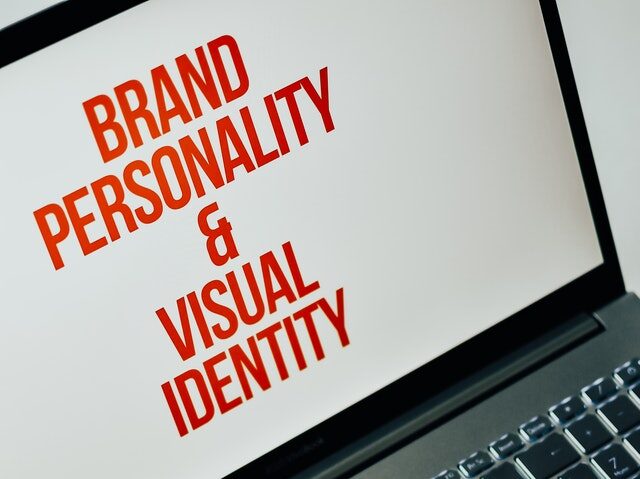Critical Steps of the Brand Development for Startup

When you are starting your business, many things lead to brand development. The first is logo building, and usually, people are fully aware of it, and as soon as they start working, the first thing to do is logo designing. But it is not enough. Brand development takes time and strategically planning.
Nike and Adidas became brands after a passage of time and wise strategy plans. Luckily, now getting recognized is more comfortable as compared to those brands. Thanks to technology and advanced marketing techniques, you might not get years and years to develop your brand.
However, what exactly is brand development?
It’s a mash-up of everything you do to promote your company, from your brand identity to your logo, name, and more. All of these factors go into your brand development strategy, and a smart brand manager can handle them all.
At the end of the day, brand development is critical to the creation and longevity of your company, so do your homework, design a strong logo, and take use of the free business advice accessible online. It’s a long-term project, not a quick fix, so take your time and learn how to properly establish a brand.
If you are new and also looking for tips for brand development for your startup – worry not. Here I’ll guide you through a few techniques to earn you a comparatively faster track for your startup brand development.
Brand development for your startup entails coming up with something that expresses who you are and what you do. It conveys more than just the types of services and goods you offer. Your brand must fulfill a deeper need for your customers or provide a strong set of values with which they may identify.
Everything about your brand, from the name and logo to the material you share on social media, will represent the personality and heart of your company. If done correctly, brand branding will quickly and effectively convey to your target audience what your company is all about.
Internal brand recognition:

To build your brand, you must be clear about your brand yourself. Discover the answers of whom, what and why. Who are you? Why do you exist? What makes you different? And what are our potencies for the future? Support the answers with logical and statically answered questions.
Internal branding is a corporate approach that allows and motivates employees to not only keep but also “live” the brand promise. Companies do this through involving employees in the brand development process, informing them about the brand, and inspiring them to be enthusiastic about it in order to influence their behavior to support the brand. Internal branding is very significant since businesses grow from inside and contribute to higher sales. Both the “internal brand” and the “external brand” must be linked.
As the concept of branding has expanded and evolved, it has come to mean a variety of things, including a distinctive design, a sign, a moths symbol, or specific words; anything distinctive that serves to set a company apart from its competitors. Fundamentally, this ‘individuality’ will grow to be associated with a level of credibility, quality, and satisfaction in the eyes of the client over time.
Internal brand awareness is important because it allows employees to form emotional attachments to your products and services, which converts into pleased customers. You run the danger of your employees harboring bad thoughts against your brand or becoming frustrated or disengaged if you don’t impress your brand on them. Employees who are more aware of your brand are more inclined to care about and believe in it, which will strengthen business culture. Here are a few pointers to help you start building internal brand development.
What does this mean for your staff, though?
That is, after all, the whole point. Internal branding is the process of connecting employees to your external brand, demonstrating what that brand means to them, and ensuring that they understand and live the corporate objective.
Internal branding is a corporate strategy that aims to create employees at all levels “ambassadors” or authentic representatives of the company and its values by focusing on delivering the company’s fundamental culture, identity, and premise to its employees as well as its customers.
Analysis of your competitors:
When you have analyzed what you want to endorse, it is time to see what’s going on in the market. The competitor’s analyzes are essential because, by market research, you have an idea of customers’ needs and demands. Analyze the market and try to find the answer of:
- Who and how much competition you have in the marketplace?
- What are they offering to their customers?
- What is the scope, and what are the needs of customers who are still not met.
Remember that business and product development are attached to branding, and all things have to go together.
All brands are competing for the same thing: market share. More market share gives you a competitive edge, but it also gives you more bargaining power with suppliers.
And how can you gain a larger piece of the market? Conducting a competitor analysis is a good way to start.
Competitor studies assist you in identifying and exploiting your competitors’ shortcomings. Their flaws can become your strengths, allowing your company to gain a competitive advantage. A competitive study can help you explain and reinforce your value proposition.
Create a brand statement:

It is time to create a distinctive brand statement. Please do not confuse it with your aims and purposes. It explains all but in a small and concise message. For instance, when you hear “Just Do it,” you may instantly get an idea of Nike. The brand positioning makes you different from your competitors and makes you prominent in your category. The rules are simple, to be honest, and keep it clear.
This crucial self-marketing tool is essentially a succinct description of your primary skills and the value you can provide to any company you want to work with.
Consider your personal brand statement to be a one-sentence summary of who you are and what you have to offer. If you want to catch the eye of a hiring manager or recruiter scouring through CVs, or simply have a good one-liner ready when your Skype interviewer says, ‘So tell me about yourself…,’ this is the tool for you.
So, where may your brand statement be used? What’s the best way to go about making one? What are the best ways to make yours stand out from the crowd?
What Should the Length of a Brand Statement Be?
A personal brand statement should, in general, be entrenched in people’s heads. Try to transmit the same energy as your favorite jingle. Audiences might be interested in hearing about your career’s spectacular story. However, your audience is unlikely to recall much of the story. What they really need is a cause to take a break and smell the roses, and your brand may provide that. As a result, you can find samples of personal brand statements of various lengths.
In a few phrases, most of us can sum up our favorite movies or books. Meanwhile, watching a movie takes several hours and reading a book takes several days. As a result, it’s apparent that first impressions linger. It also displays our ability to select the information we require while ignoring the ones we do not.
Furthermore, consumers do not always have the time to sit and listen to long-winded speeches from every zealous entrepreneur. They’d much prefer to have a Cliff’s Notes version of your venture so they can make quick decisions. As a result, consider your brand statement to be a creative slogan. It should encapsulate all you want others to know, understand, or admire about you.
Growth space for brand development:
Always make space for the growth of your services and products. With time your offers will become more refined; you may increase or decrease the number of services. When developing a brand, you may need to build enough flexibility to allow these kinds of adjustments.
You don’t establish a relationship with all of your consumers and persuade them to make a purchase before abruptly ceasing to communicate with them. To stay in front of people’s minds, you need to constantly reassess and adjust things, which is what brand development is all about.
It’s all about staying current, establishing confidence, and maintaining high standards of service and quality. It’s not something that can ever truly be completed.
Visual is very important for brand development:

When it is about brand development, nothing is less critical to go through every detail, graphic design, color and fonts to provide it with a personal touch. Many business concepts fail simply because they lack a proper marketing strategy and plan to present the brand and attract clients’ attention. Modern marketing encompasses a wide range of disciplines, from data analysis to technological solutions, but one of the most crucial aspects is your visual branding.
Given that we live in a world where millions of prospective customers are just a click away, how you portray your brand and the impression you make in the first few seconds is critical to your business’s success.
Platforms such as Pinterest, Snapchat, and Instagram have pushed the internet to become more visual, prompting many firms to rethink their current strategy.
Aesthetics Gives Your Brand a New Look
It’s no secret that humans are visual beings who judge others based on their appearance. Keep this in mind while creating a brand, as the design may make or break a company’s first success.
Good and effective designs that blend corporate strategy and customer insights can last for decades, but if the style becomes old, don’t be afraid to rebrand.
Investing in design ensures that your product is constantly improved and of high quality for your customers.
Strike a balance
During the brainstorming phase, you may have uncovered certain favorites. We all have favorite brand logos and campaigns, and it’s tempting to want to copy them for our own purposes. While it’s fine to draw inspiration from other businesses, make sure your decision isn’t a carbon replica.
Your brand standards should be distinct enough to distinguish your company without conjuring up images of competing brands, especially if they’re in the same industry. What can you do to stand out if you’re selling antiques and all of your rivals are employing handcrafted, vintage designs? That could mean taking a completely new approach (a minimalist logo, for example) or focusing on a minor but important differentiation (they all have black logos, but you know Purple can be just as opulent as gold, although it’s less common).
It might be tough to strike a balance between inspiration and copycatting, but adding your own personality into your design can help you or your designers produce something truly distinctive.
Endorse brand at an internal level:
When you want to reach out to a bigger audience, the internal audience must endorse it too. Make sure that everyone within the organization buys into the brand and believes in it. Enforce some guidelines which everyone should follow so that they look like a delegation of your brand.
Developing a brand is a long journey. Gradually, your persistence and planned strategies with internal adoption will lead to success.
Individual and different product brands are linked together by an endorsing parent brand in an endorser brand architecture. An endorser brand architecture can be thought of as an inversion of a sub-brand brand architecture, with the endorsing parent brand acting as a supportive and linking factor.
Strengths of the Endorser Brand
- An endorser brand architecture can be a useful alternative to a Masterbrand architecture for brands with extensive portfolios built on a key innovation or collection of innovations. An endorser brand architecture enables a significant innovation or promise to be promoted and reinforced in the family of goods’ brand promotion.
- Each product brand benefits from brand marketing that promotes the endorsing parent brand.
- Each brand has a lot of marketing freedom thanks to an endorser brand architecture. Product managers, marketers, and internal executives frequently like the freedom to develop unique brand strategies, names, logos, designs, creative campaigns, and messages.
- Cross-selling can be aided by a link between product brands.
As you expose more customers to your brand and learn more about who your customers are and how to communicate with them, you’ll continue to create and evolve your brand design and identity.
It’s crucial to remember that you’ll never have complete control over how others view your brand.
You can steer clients in the correct direction, make a fantastic first impression, and manage your reputation, but you can’t control what people think about themselves (say, if they had a bad customer service experience).
Business owners can use a variety of brand development strategies to set their company apart from competitors, including the name, image, voice, website, and marketing communications.
Creating a customer persona, researching the market, developing brand assets, incorporating them into day-to-day processes, and putting in place a dependable infrastructure for scaling your team’s branding efforts are all important steps in establishing a consistent connection between a startup and its target market.
All you can do is put your best foot forward and try to connect with your core audience. But, fortunately, you now have the necessary tools, knowledge, and resources to get started.